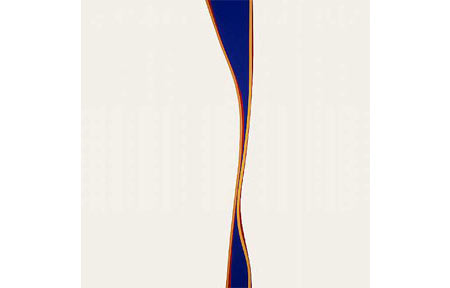
In 1934 Lorser Feitelson, together with his wife Helen Lundeburg, founded Subjective Classicism, otherwise known as Post Surrealism. He also was a pioneer in the development of Abstract Classicism, a form of Hard Edge painting that was notable for being distinguished from East Coast Abstract Expressionism. Featured in LACMA’S 1959 exhibit “Four Abstract Classicists,” Feitelson was instrumental in putting Los Angeles on the map as a center of avant garde art. His distinctive sense of space and form, associated with traditional Classicism, remained intact throughout his career. This show focuses on Feitelson’s late paintings, and the selections here show how his artistic development went through a process of reduction, a gradual descent from austere geometric forms to the inclusion of graceful lines that rhythmically spiral and dance through space. Although Feitelson intended his configurations to metaphorically express “ominously magnificent and terrifying events,” that dire sentiment is difficult to envision when contemplating his minimalist reflections on line and color. His use of undulating colored lines against solid backgrounds, or curvilinear evocations of black on black are more readily conducive to meditation. Elements from his Hard Edge period, however, can be found in boldly colored geometric renditions, their harsh contrasts softened by the sinuous lines that float and loop through them. At the same time, it is testament to Feitelson’s harmonious balance that the eye is also drawn to the empty spaces that surround them. Although the reflective qualities of his works may offer paths to emotional response, they ultimately stem from Feitelson’s critical assessment of form and space.
Published courtesy of ArtScene ©2009
